Welcome to a new issue of the Journal of Runic Studies, the premier Malkioni publication for studies into the nature of Glorantha. If you haven’t subscribed yet, please consult with the spirit bound to the appropriate electronic page.
God Learner Sorcery
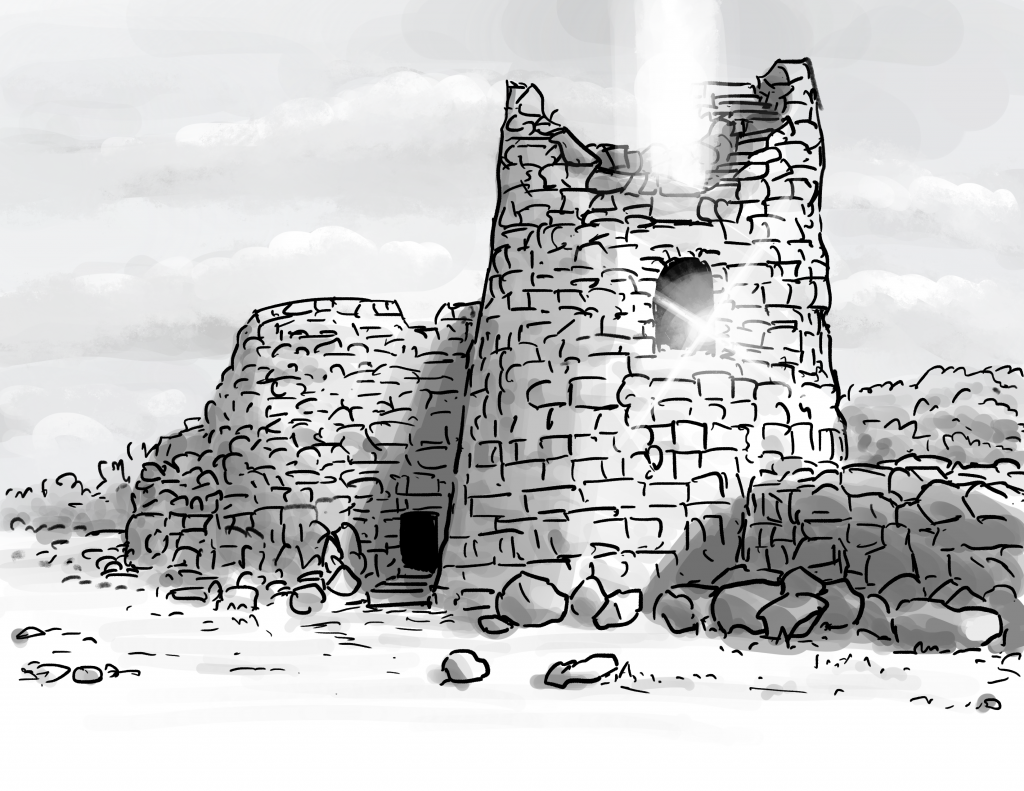
We are now occupying a nice little tower with a long history of previous occupants who have left behind documents, tablets, artifacts, and other kinds of junk. As we clean up and archive these things, we share the most interesting ones with you.
Episode 6: Gamemastering RuneQuest
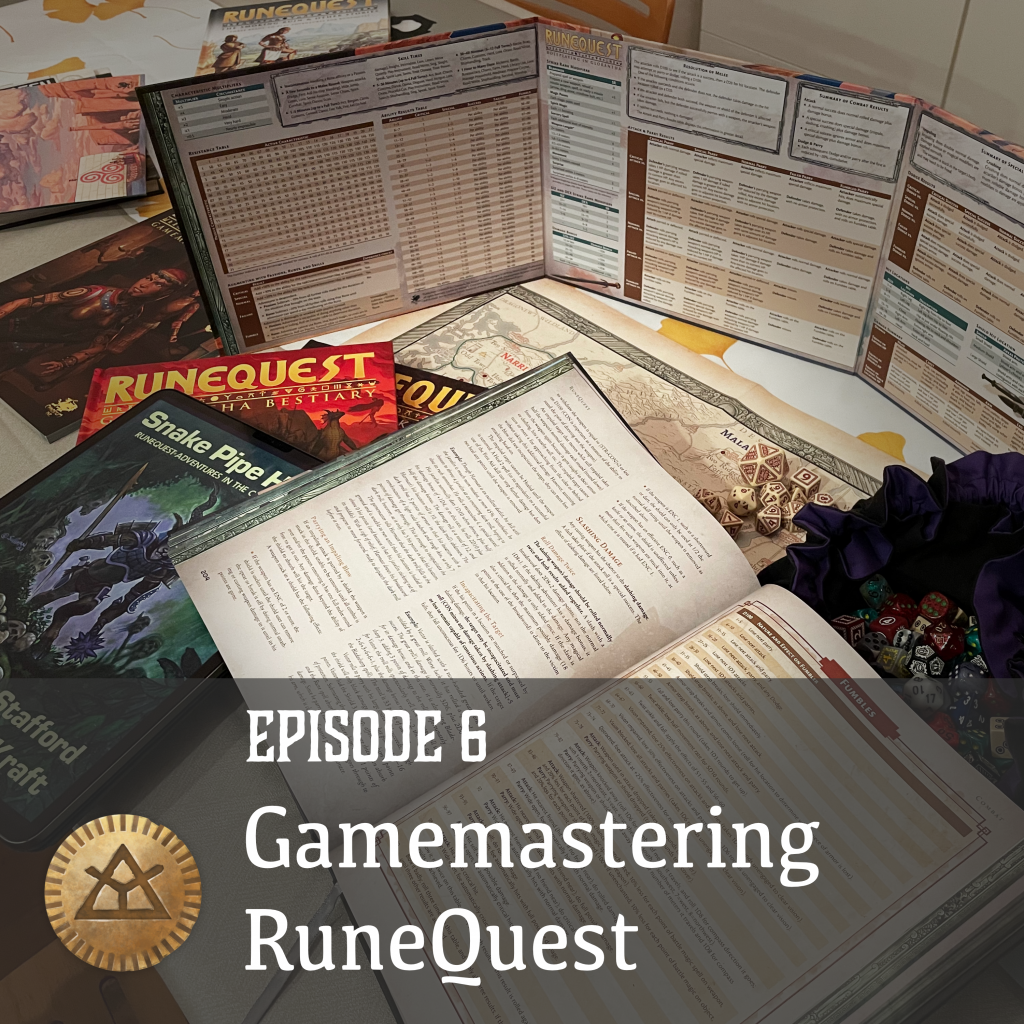
We have released a new episode of our podcast! We are joined by Jonstown Compendium authors Neil Gibson and Jon Webb to talk about the art of gamemastering RuneQuest Glorantha (although a lot of the discussion is generally applicable to many other RPGs). We discuss various tips and tricks to handle the system’s complexity, speed up combat, share game anecdotes, and generally agree on too much stuff…
Runic Rants: When You Don’t Know
Speaking of gamemastering, here’s a bunch of advice for GMs who are somewhat new to Glorantha:
[…] Start small, keep it simple, and so on. Between the fabulous Quickstart adventure, the excellent Gamemaster Screen Adventures book, and the great new Starter Set, you should have everything you need.
But Glorantha is a big and complicated setting, and as a gamemaster you’re bound to make “mistakes”, or get stuck with something you don’t know. Here’s some advice on that, from my short past couple years of RuneQuest.
It’s all in the article!
Chaosium News

Here are this week’s Chaosium news!
RuneQuest “All Stars” Game
The Brian Holland-led Starter Set adventure playthrough is now up on YouTube after having been streamed live last week. I haven’t watched it yet so I’ve got no comments on it… maybe next week!
ENWorld Interviews MOB

RPG news outfit ENWorld has an interview of Michael O’Brien on the topic of the upcoming ChaosiumCon. It mostly repeats the information you might have already read via Chaosium’s own channels, but with a sprinkle of extra anecdotes.
Jonstown Compendium

The Jonstown Compendium is Chaosium’s community content program for all Gloranthan games, hosted on DriveThruRPG. Disclaimer: all the relevant links are affiliate links that hopefully will let us cover some of the hosting and maintenance costs for the website and podcast! Thanks for using them!
A History of Malkionism
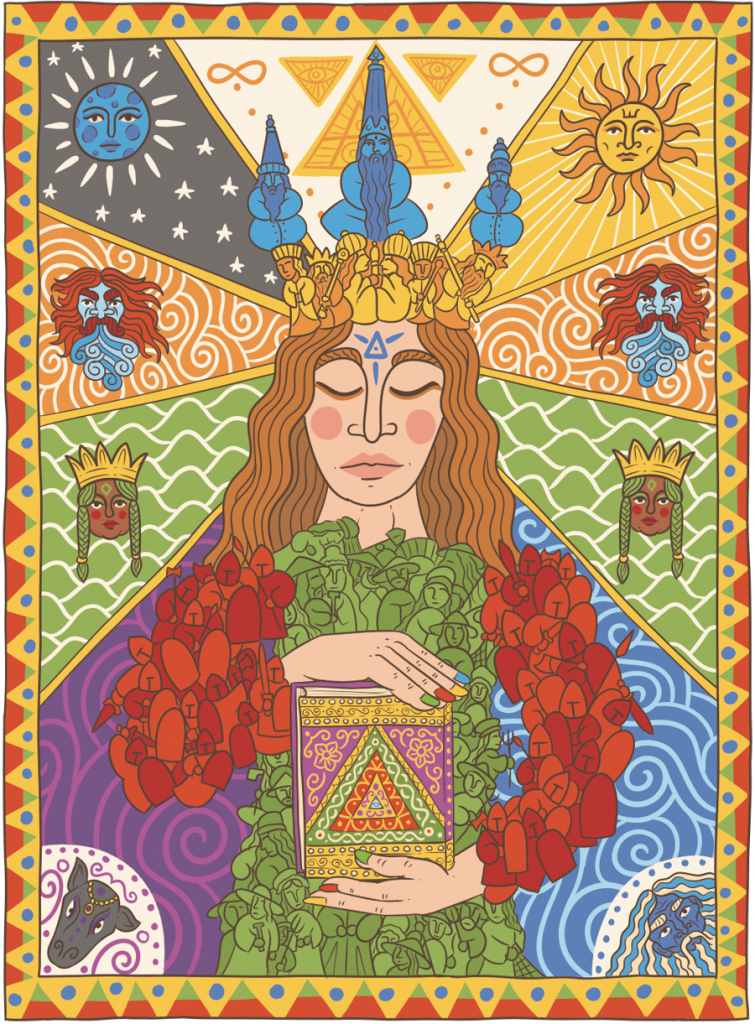
Nick Brooke released some more out-of-print material, with some new illustrations by the awesome Katrin Dirim. It’s A History of Malkionism, which details parts of Western Genertela, including the Brithini, the Waertagi, and the Vadeli.
A Site to Die For
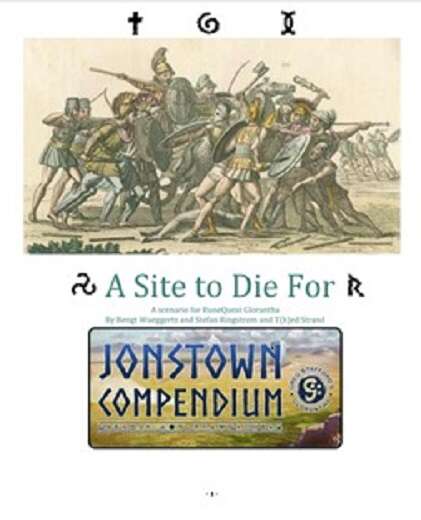
Here’s a new release from some new names, as far as I can tell. A Site to Die For is an adventure where your players will protect a week-long ceremony to consecrate a shrine to a Greydog Clan hero. Of course, there will be several enemies to defend against… and if your players are not playing in the Greydog Clan, you might be able to repurpose this book as something they can attack!
Six Seasons in Sartar Reaches Platinium Level
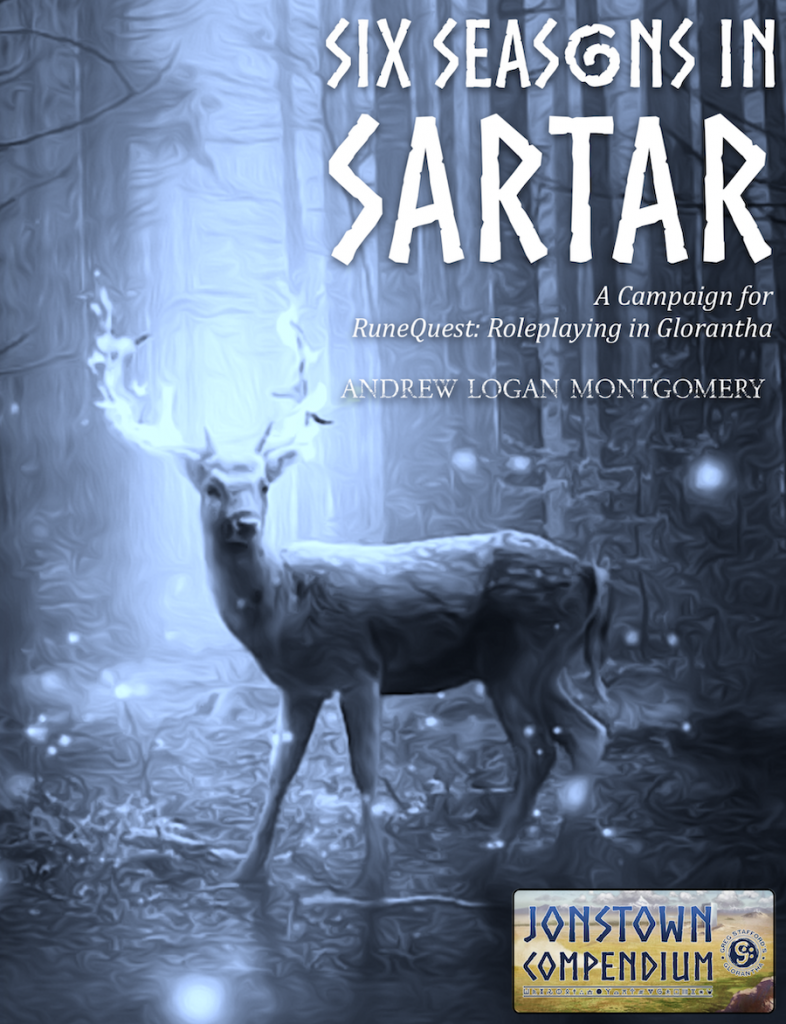
Six Seasons in Sartar is the first Jonstown Compendium title to reach Platinium Level! This means more than 1000 sales, which only less than 1.5% of all titles in DriveThruRPG (including “professional” titles) ever reach. Congratulations Andrew!
Nick Brooke on the Armies & Enemies of Dragon Pass
Still now sure about getting that big book? Nick Brooke goes over everything that’s inside to get you all hyped! Plus, some answers to common questions such as “why isn’t there a colour print edition?“
Jonstown Compendium Sales Analysis
The ever productive Nick Brooke (does he ever sleep?) has an in-depth analysis of the Jonstown Compendium sales over on BRP Central and on the Chaosium blog. It includes pretty graphs, and you know I like pretty graphs as much as I like pretty maps.
There isn’t too much surprising data in there (although I like seeing how crazy Black Spear sold from the start!), but Nick always has some good conclusions to help Jonstown Compendium authors prepare, publish, and price their works. He was definitely a great pick as “embassador” for Chaosium.
Jeff’s Notes

Jeff Richard, the current mastermind on everything Gloranthan at Chaosium, is often posting notes and thoughts on the RuneQuest Facebook group. Here’s our curated list from the past week. A partial archive of these sources is compiled on the Well of Daliath.
The Spread of Grains
You guys know by now that I love maps, right? Well check this out:
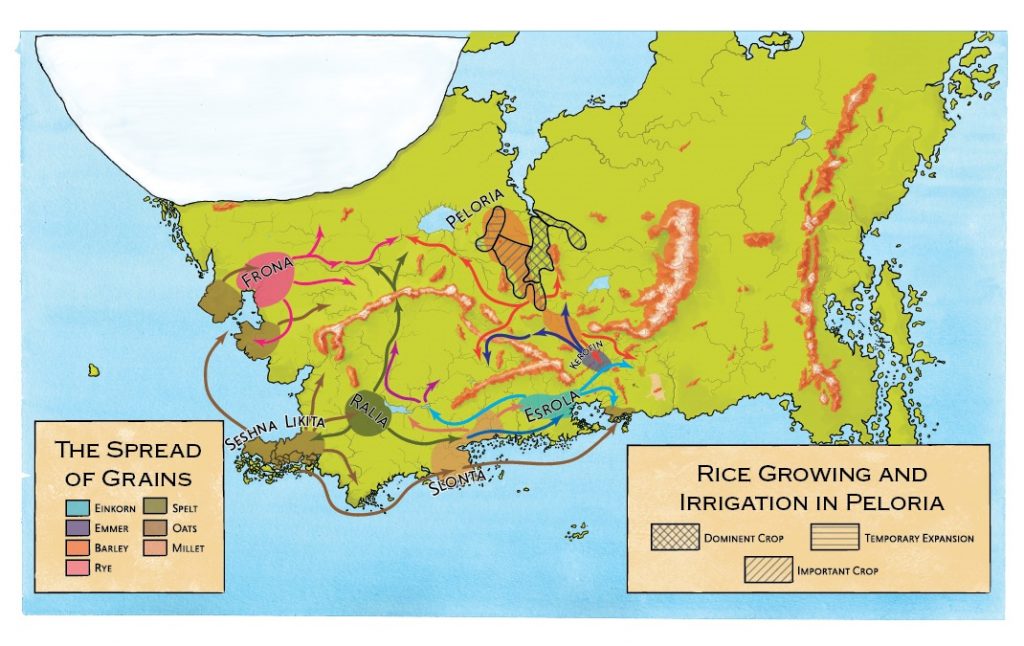
This is a work in progress map showing the spread of grains across Genertela. If you’re an ESL person and/or not very knowledgeable about agriculture (I’m both!), Jeff had previously posted about the different types of fields (thanks 7Tigers!):
- Einkorn Wheat: “This cereal grain is relatively short, usually less than 70 centimeters tall. It can survive on poor, dry, marginal soils where other varieties of wheat will not.“
- Emmer Wheat: “This awned cereal grain gives good yields on poor soils.“
- Barley: “This cereal grain is a highly resilient crop, able to be grown in varied and marginal environments. It has a short growing season and is relatively drought tolerant.“
- Rye: “This cereal grain grows better than any other cereal on heavy clay and light sandy and infertile or drought-affected soils.“
- Spelt: “This husked wheat is adaptable to cold climates and is easy to store.“
- Oat: “This cereal grain is eaten chiefly as porridge. Oats are cold-tolerant and are unaffected by late frosts or snow.“
- Millet: “This annual grass is grown as a cereal grain. It can reach a height of 120 to 200 cm. It is well adapted to drought, low soil fertility, and high temperature.“
Matt is still working on it (colours will be tweaked and typos fixed, don’t freak out!) so at this point I’m not sure how to read it yet. As far as I can tell each land goddesses has a “special” grain, which you can use in any heroquest involving the Flamal the Father of Seeds’ various unions with these deities. Imports and exports seems mostly balanced, except for Esrolia where it looks like they’re exporting more than they’re importing. This doesn’t necessarily translate to actual trade of goods, but it might be a factor for that country’s wealth.
Prax and The Wastes
And another map! Yay! This one is on Prax and the Wastes, with the green cross-hatching showing the fertile grounds:
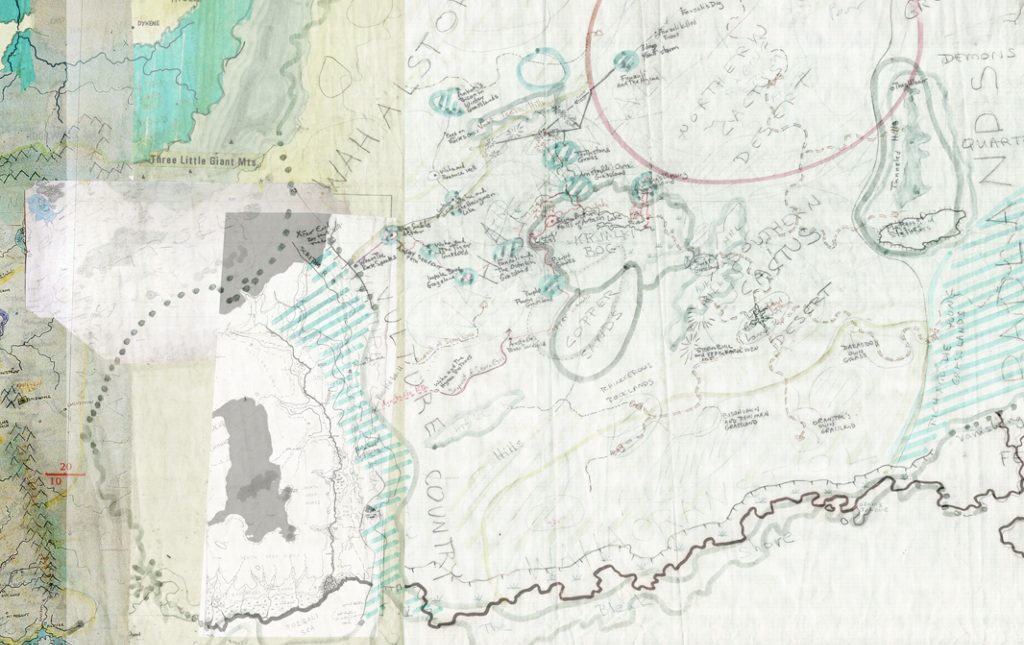
As far as most settled people are concerned, all of the Wastes are basically like Vulture Country – inhospitable to man and beast, with terrible dust storms (worst are those from the Copper Sands), and populated by broo, scorpion men, and other monsters.
But the Praxians know how to survive in the Wastes – Waha shows them the way. It is harsher and more demanding than fertile Prax, but herds can move from grassland to grassland protected by the nomads. Gods and spirits walk the Wastes – it was in the Wastes that Jaldon Goldentooth became a Hero. And it is there in the Wastes that Storm Bull defends the corrupted corpse of his friend and liege Genert.
If you’re simple-minded like me, your original understanding of the Praxian tribes might have been that Waha’s way was about surviving in Prax. Because they’re called “Praxian tribes”?
Well apparently not. Based on previous material shared by David Scott, it seems the Praxians spend most of their time in the Wastes:
During the Lunar Occupation, many Praxians exiled themselves to the Wastes. Many joined the White Bull Society, which began in the Wastes. Now they are returning to Prax at Argrath White Bull’s invitation, and they are making preparations for the Final War against Chaos.
And if you want maps of grazing regions in Prax, David Scott has you covered (there’s more in the next pages in the thread).
Note that the Praxian tribes being in the Wastes isn’t new to the Lunar Occupation. They’ve gone there many times, such as during the Second Age when the Pure Horse People invaded Prax. At some point, they also expanded northwards:
After the Dragonkill War and the closing of Dragon Pass, the Animal Nomads entered into a period of comparative calm and growth. Their intertribal warfare continued, often disintegrated into inter-clan fighting in the Genertelan Wastes. Yet they prospered, relieved at last of the troublesome influence of the civilizations in Dragon Pass. Minor adventures in the Holy Country, Kralorela, and Teshnos were viewed with alarm from the inhabitants of those regions, but their retaliatory raids failed to do long-lasting damage to the Animal Nomads. It is probably fortunate for those regions that the ancient ancestral grudge against the Horse Barbarians of Pent was greater than their lust from the luxuries of civilization.
Cut off from other areas of expansion the nomads expanded northward into Pent. This was a gradual process of many generations, yet proved inexorable. Both the Animal Nomads and the Horse Barbarians have stories about the famous battle of No-Feet-on-the-Ground, where even the sun and storm took part so that the earth itself recoiled and withdrew from contact with the battle. Its date is uncertain, and the multitude of conflicting information makes a sensible recollection impossible. Regardless, the battle was a disaster of immense proportions for the Horse Barbarians. They were split into East and West divisions, and reeling into civilized lands in the north. Their arrival in Peloria was during the Lunar Third Wane.
I actually much prefer these nomads being out the Wastes, personally. One thing I was bothered with when I started with Glorantha was how small Prax is for all these nomadic tribes… the size of the Wastes makes more sense to me.
Associated Deities
Jeff has some information on associated cults, and how much cross-pollination there is with priests and initiates of one cult participating in rituals of another:
For example. Ernalda’s husband deity participates in many of her mysteries – Orlanth in Sartar, Yelm in parts of Saird, etc. The Orlanth initiates gain access to some of Ernalda’s magic (but using Orlanth’s Rune points) and Ernalda gets their sacrifices and magic points.
I think we can see this in the White Bull campaign where a lot of the adventurers are at least lay members of several other cults, participating in their worship and getting Rune Points back by association. This shouldn’t be underestimated in a RuneQuest campaign, and only Humakt gets the short end of the stick, having no associated cults. Everybody else in the general Lightbringer pantheon has several associations. This is why Orlanth and Ernalda are so much more powerful as a cult choice.
Lunar Nobility
Jeff notes that there are many powerful families (or clans) surrounding the Red Emperor, all of which have some sort of kinship (distant or direct) to him. I’d love to play with this kind of court intrigue and imperial spycraft personally… Anyway, when you build Lunar patrons or villains for your campaign, make note of this:
Those “born in the red” are of course superior to those born while the mask was a mere mortal, although I have heard convincing speculation that only daughters are ever born in the red (Hwarin Dalthippa, Hon-eel, Jar-eel, etc.) but that might just be the murkiness of imperial genealogy. That being said, I am unaware of any confirmed son of Moonson.
The Silver Shadow Satrapy is filled with these imperial kin, but most Dara Happan nobles now claim at least some kinship with Moonson. Being descended from Moonson means that you are but a few generations from divinity and can claim descent from both the Red Goddess and Yelm!
Some of the most powerful clans are presented in the Guide. They include the satrapal clans like the Eel-arish and the Taran-il, think of these like daimyo clans in Imperial Japan. They are related, but conspire against each other, raise private armies, and fight with each other through assassination and secret wars. They are focused on the real prize, of course, and that is control of the Red Emperor and domination of the Lunar Empire itself.
“Satrapal clans” are family-run divisions of the Lunar Heartleands (as opposed to the Lunar Provinces).
The Daimyo were the classic feudal lords you see in the most popular stories set in Medieval Japan. They were subordinate to the Shoguns, and then to the Emperor (I’m not sure who the Shogun-equivalents would be in the Lunar Empire). If you’ve seen or heard any story set in, say, the Edo period, with samurai and ronins and all that cool stuff, think of the often complicated politics between regional lords always bickering and plotting among each other… like I said, I’d love to play in there!
Chaotic Features in the Lunar Empire
While we’re dealing with the Lunar Empire, how about a side-order of Chaos?
The Red Book of Magic had already hinted that the Red Goddess cult has access to the Chaos Gift spell, which grants someone with a Chaos Feature (temporarily) and a Chaos Rune affinity (permanently). Jeff also shared that this spell is granted (through cult associations, I assume) to senior priestesses of the Seven Mothers, and to several individual cults of these deities.
So let’s assume somewhere less than 1% of the Lunar population is tainted by Chaos, but that percentage is primarily in the ruling class or its henchmen.
Remember that a Chaos feature is much more than just a cool power – it is something that warps and mutates the recipient. Often it results in mutated horrors, but even when beneficial the results can be inhuman. People with features too smooth, uncanny valleys, exaggerated or grotesque body parts, and so on. But also those gifted have the sensation of wielding blasphemous power ripped out of the cosmos.
Now 99% of the population have never experienced Chaos Gift, but that less than 1% are tainted by the experience. Many are Illuminated, but many are not. Needless to say this likely has some cultural effect.
My own take on this “cultural effect” is that, depending on the place, the ruling class people would be seen either as perfect superior humans, alien creatures, horrible monsters to be feared, and so on. This would foster a different views and opinions on the difference between the leaders of the Empire, and the ideals of the Empire. There’s some interesting stuff to explore there.
Trading in Genertela
Genertela was not having a great time between the Closing of the Oceans (in the mid-900s) and the end of the Dragonkill War (in the mid 1100s).
[…] trade (and thus urban civilization) was minimal. Ralios and the Holy Country had contact through the Manirian Road – a series of caravans that went from Esrolia to Safelster and Tanisor.
Peloria was cut off from the south and Ralios, and had only the long river route down the Janube to Sog City. This route was controlled by the Carmanian Empire, but its long distance made it very expensive and slow.
It’s the founding of the Kingdom of Sartar (in 1492) that brought high-volume trade between the other main parts of the continent, especially as they build many roads and inns.
The Holy Country and Sartar grew wealthy hand in hand, and trade and cultural connections grew even stronger.
When the Opening took place in the 1580s, this became supercharged. Trade with the whole world became possible through the Holy Country, and spices, herbs, silks, and other exotic luxuries came across Dragon Pass into the Lunar Empire. The Lunar nobility greedily bought whatever luxuries they could, and coveted the great riches they brought the rulers of Sartar and the Holy Country.
In a follow-up post, Jeff expanded on the topic of trading, using silk as an example:
Silk is something found among the elites in the Heartland, in Lunar Tarsh, in Boldhome, and is quite common in Nochet, Rhigos, and Karse. Assuming the Lunar Empire has roughly the same level of elite access to silk as the later Roman Empire, it needs about 5 or 6 tons of silk per year.
Jeff then goes with some quick math. Let’s assume that Kralorela exports 10 tons of silk per year by ship through the Holy Country, and 6 tons of silk per year to the Kingdrom of Ignorance “to keep them quiet” (the Kingdrom of Ignorance used to be a great troll kingdom, and is now a decadent land ruled by “malignant humans who worship gods which would be best forgotten“).
The Holy Country keeps half the silk going through their ports, and the rest travels from Karse on northbound caravans. The Sartarite elite takes 1 ton of it as it passes through their lands, which is “enough silk for 800 silk tunics or 1600 silk dresses“. The Kingdom of Ignorance passes 2 tons of silk onto the Red-Haired Caravan (which I assume is a collective of merchants from the Red Hair Tribe of Pent) which also brings it to Peloria.
So that’s how the Lunar Empire gets their 6 tons of silk per year to keep the elite exquisitely clothed.
In theory, you could put that all in one big silk caravan, but of course it isn’t. Each caravan might have one mule with silk – but that still is enough for about 60 silk tunics, which is going to be a good return!
As an aside, if you’re wondering about spidersilk:
I suspect there is far more spidersilk produced in Dagori Inkarth (held to be superior for making of ropes and threads than the silkworm silk of Kralorela and Teshnos) than from [the Kingdom of] Ignorance. But it is also produced in much smaller amounts, coming only from the Aranea Cult.
Spidersilk is therefore more expensive, and first used by trolls for more practical things than fancy pajamas. If you like danger, you could try to start a new trade route starting from the Spiderwoods of Dorastor…
Anyway, now expand this trade volume to the “900 tons of goods that gets sent each year up from the Holy Country to Furthest“. Jeff does exactly that but his math didn’t seem to line up — I’m pretty sure it was just a typo in the first number, but I also figured it would be fun to do it myself! I’m also approaching it from a different methodology here.
A mule can apparently carry about 90kgs on average. That’s about 10000 mules a year passing through Sartar from the Holy Country to Peloria. Jeff splits them among 25 huge, large, and medium caravans. I’m going to tweak his numbers and say that a “huge” caravan is 1000 mules, a large one is 500 mules, and a medium one is 100 mules. This gives a split that’s very close to Jeff’s, with 4, 10, and 10 respectively of these caravans, for a total of 24 caravans moving northward along the King’s Roads.
If you consider a fixed point along those roads like, say, Jonstown, that’s one caravan passing through every two weeks. Jeff’s math comes up at one caravan passing through every two days, though… which would be possible in my model but with smaller caravans. But I figure that large caravans might stop at cities like Jonstown for a few days anyway. And if you add a similar trade volume coming the other way (from Peloria to the Holy Country), plus a smaller volume from Prax, we would indeed reach Jeff’s conclusion of one caravan every couple days.
These caravans are the life blood of the Kingdom of Sartar, and so keep that in mind when you think about the economics of the kingdom.
This is part of that big explosion in trade following the Opening – which interestingly is about the time the Red Emperor takes a personal interest in Dragon Pass.
Dawn Age Wenelia
How about some notes on Wenelia and the Pralori Elk People, which I frankly didn’t know much about until now?
First, let’s check out the Wenelia map from the Argan Argar Atlas:
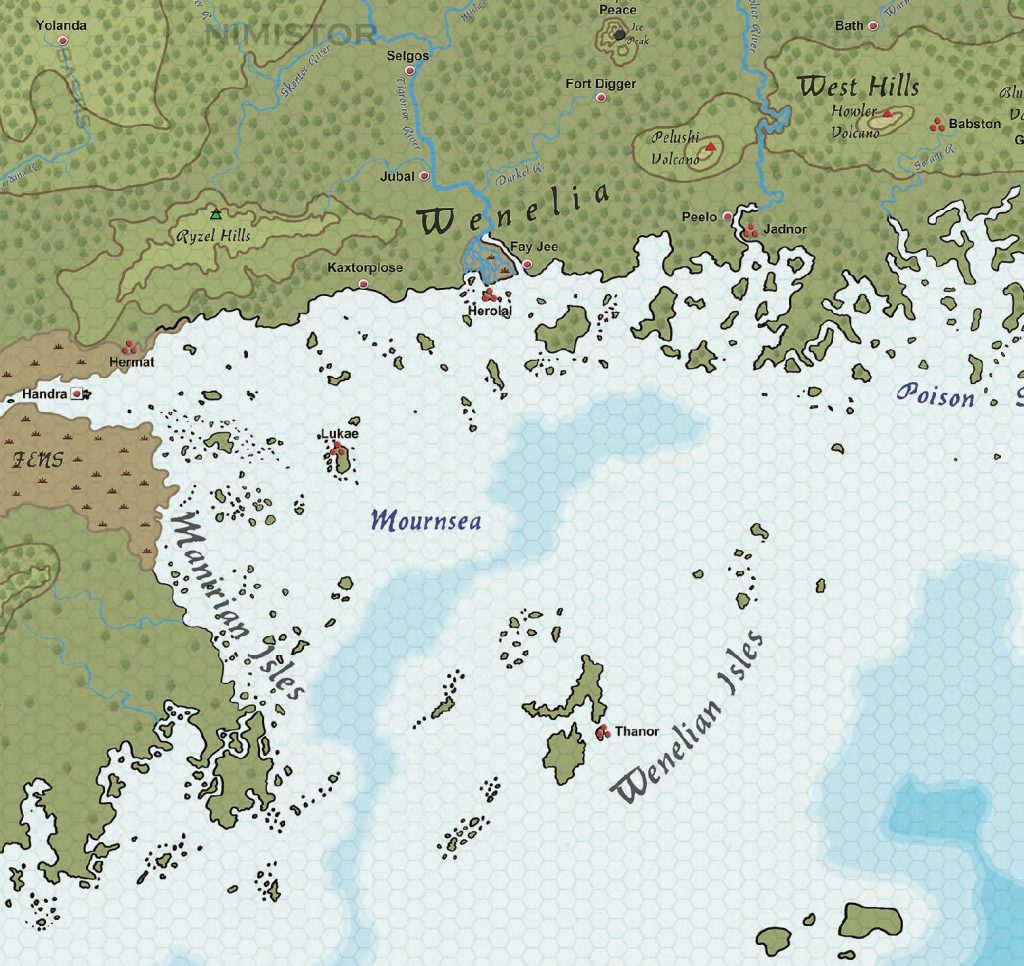
Wenelia is located between Maniria and the Holy Country, on the southern coast of Genertela. See these Wenelian Isles? There used to be a peninsula there, along with some bigger islands, before Slontos was sunk as part of the general cosmic backlash against the God Learners (which also sunk Jrustela and Seshnela, and Closed the Oceans). There’s a map of what it looked like in the Guide, but Jeff also shared his own historical map:
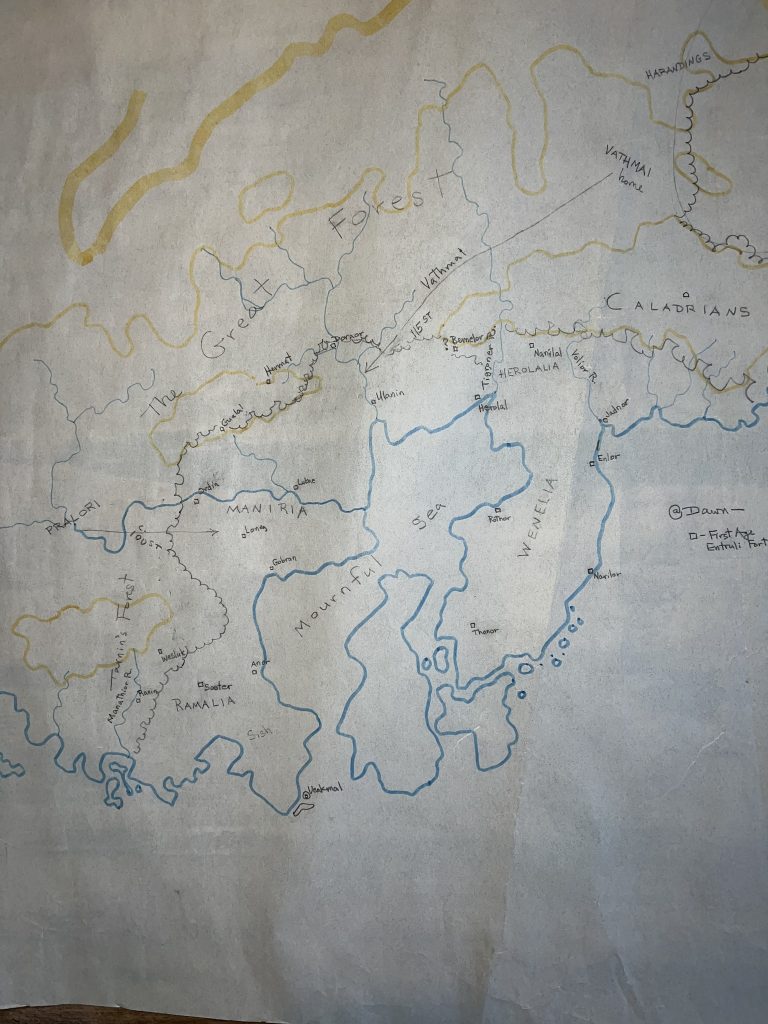
So anyway the Pralori Elk People used to live here in Wenelia at the Dawn. These are Hsunchen people, so when we say they’re “elk people” we really mean it: they shapeshift into elks. They also tend to be more primitive than the cultures of Dragon Pass.
The traditional foes lived to the south and were called the Entruli. These were a branch of the Mraloti, or boar-folk, who had survived the Darkness in relative strength and delivered their civilization to their cousins after the sun rose. Thus, the Entruli ruled all of the peoples to the south.
So these people are fighting all the time like it’s still the Great Darkness, until:
In the year 97, the Entruli did what the Pralori could never do. Their ruler broke an ancient taboo which angered the gods. A great flood came rushing upon the land, drowning everything in its way and destroying the land. Only the capital, Porluftha, escaped because a Kolat clung madly to the buildings and held firm as the water washed over him. The city and its ancient inhabitants were preserved in a great air bubble undersea, lost to the outside world, undiscovered for many years.
I haven’t seen any references to this before, including a town called Porluftha, but according to the Guide the Mournful Sea (or Mournsea in the first modern map) used to be called Porluftan Sea! I guess we know where this underwater city roughly is…
Going back to the story, the Entruli and Pralori were still plundering each other, this time with the Pralori having the upper hand, but the Entruli got a break:
[…] there came a leader who was related to the old Entruli dynasty. He and his tribe came from the Shadowlands, where the Only Old One ruled over a nation of trolls and subject populations. A time had come when the Only Old One offered many of his subjects their freedom if they left his lands, or else commanded them to accept his rule.
This leader was Lalmor, of the Vathmai tribe. With the help of Aram Ya-Udram (whose descendants the Aramites, fun fact, became the hated Tusk Riders), he:
[…] united the Entruli, helped them rebuild their strongholds, and led them to a great victory in driving off the Pralori. He arrived in 115, was finished with his victories by 122, and died in 138.
King Lalmor’s arrival was more than simply a unification of the Entruli peoples. He brought a new religion with him, and he was also aided by many inhuman peoples. Lalmor came from Dragon Pass, where the Unity Council had been formed and where they worshiped the world-saving Lightbringers. Lalmor brought worship of Orlanth and his pantheon. With these new cults he was clearly ascendant.
So this is really the detailed story behind the Guide’s shorter account: “The people of Slontos were liberated from Pralori oppression in 115 by Lalmor of the Vathmai, a Theyalan tribe“. Shows you how much room you have to spin
After that the Theyelan missionaries spread from Entruli lands to meet the Pralori, who apparently received them well:
The Pralori recognized the superiority of the new gods over their own animistic spirits. It did not unify the tribe, nor did it split it.
The Lightbringers faith did not ensure the unity of the Entruli. After the death of Lalmor in 138 the Entruli heirs divided his lands into several kingdoms. Some were coastal and thrived upon the increasing sea-trade borne by the ship-living Waertagi race which ruled the surface waters. Some were buffer states between the coastal cities and the inland barbarians. Others were barbarian kingdoms living in woods and plains.
My mind immediately tries to find the connection between the aforementioned sunken city and the Waertagi. Is there already some material I have missed?
Community Roundup
The community roundup is our highlight of interesting things being mentioned in the Glorantha-related Facebook groups, sub-Reddits, and other similar online places.
RPG Imaginings Reviews the Starter Set
What it says on the tin: the RPG Imaginings channel, which fans of Call of Cthulhu would know very well, does a review of the RuneQuest Starter Set.
Andrew Logan Montgomery Interviews Claudia Loroff
The author of the aforementioned Six Seasons in Sartar has a nice treat for us on his blog: an interview with Claudia Loroff, who worked among other things on rewording and revamping the female-oriented cults in RuneQuest Glorantha. She’s also Jeff’s wife, by the way, and you can see her playing a Ty Kora Tek initiate in the White Bull Campaign stream.
The interview is mostly focused on the role of Ernalda, her cult, and her initiates, both in Glorantha itself and in gaming.
To make a long story short – your Ernaldan in your adventurer’s group is usually the key to get people to trust you and get their support. She can be very convincing, and her parties are legendary.
At the same time, we had to make sure that she can be a real threat in a battle. An Earth Elemental is not funny and commanding swine can make the life of Tusk Riders very difficult.
The whole interview is very interesting, including the origin of the pre-generated character Yanioth, how to deal with sex, pregnancy, and sacrifices in your campaign, and more!
Greg Stafford’s White Dwarf Interview
Do you read the GROGNARDIA blog yet? No? You should! It’s great!

James Maliszewski recently published an article about White Dwarf #17 (1980) which features a very interesting interview of Greg Stafford. There’s a lot of interesting stuff, such as what Greg had in mind when he created the main figures of the Hero Wars, how to pronounce White Bear & Red Moon’s acronym WB&RM, or what is the appeal of RPGs. Go check it out!
DiceBreaker’s Great RPGs That Aren’t D&D
DiceBreaker released a follow-up video to their original “10 Great RPGs That Aren’t D&D” (which featured surprisingly varied and opinionated choices… which is good!), with “6 More Great RPGs That Aren’t D&D“. Of course, since it’s here in this newsletter, you can bet they talk about some Glorantha game… RuneQuest, in this case.
[…] the game continues to stand-up as a singular in fantasy roleplaying, a mix of visionary world-building and ambitious gameplay that offers something very different to the likes of Dungeons & Dragons. A powerful meeting of realism and fantasy, it’s a tabletop RPG that has remained a cult classic for decades. It may not be as well known as Dungeons & Dragons, but it deserves to be discovered by more players.
Refereeing and Reflection, Reflecting on the Starter Set
The RPG blog Refereeing and Reflection did a pretty nice review of the RuneQuest Starter Set which delved into some “comparative reviewing” that I hadn’t seen yet so far. Mainly: the reviews delves into the similarities and differences between the RuneQuest, Call of Cthulhu, and Warhammer Fantasy Roleplay Starter Sets (they’re all great, get them all!). For instance:
Another important distinction is that whereas the Call of Cthulhu Starter Set included a compact character generation process, there are no character generation rules here. RuneQuest has always had a somewhat crunchier system than Call of Cthulhu and other Basic Roleplaying-derived games (after all, Basic Roleplaying was originally derived by taking RuneQuest and then pruning it back to the core), and the current edition is no exception – between their cultural backgrounds, Runic affiliations, passions, cult memberships, magic, and so on, your typical RuneQuest character simply has far more in the way of game mechanical moving parts than a Call of Cthulhu PC.
Read the full review here.
Six Ages Makes RPS’s Top 100 PC Games
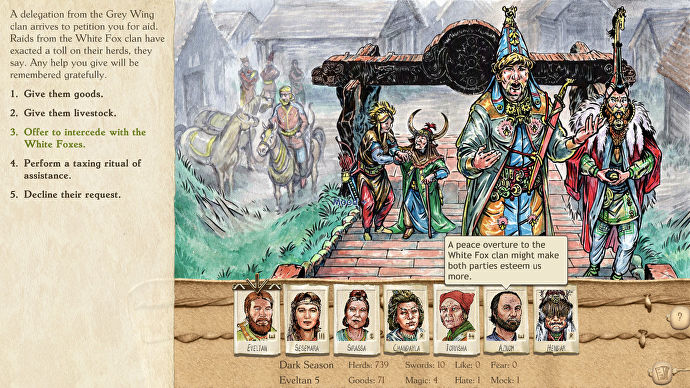
Video games review website Rock Paper Shotgun has an annual Top 100 of their favourite PC games, and Six Ages made it on this year’s list at 77:
In 1999 we were visited on this earth by a fantasy tribal management game called King Of Dragon Pass. It was a blessed time. But those days are gone, and now… wait, what glimmering is that from the woods? Ah, it is Six Ages, the spiritual successor to that ancient game of decision-making and clan-gathering.
Art by Zoja Barylko
Jonstown Compendium authors take notice: you can get commissions from Zoja Barylko, who has a pretty original take on Glorantha! Top-left is a Maran Gor initiate, top-right are hippo-looking trolls, and bottom is a trollkin shop-keeper.
Elsewhere on Arachne Solara’s Web
Not everything is about Glorantha, although most things are! Here are loosely relevant things that we found on the interwebs.
Ancient Warfare Expert on Movie Battles
The Insider channel brought ancient-warfare Roel Konijnendijk to comment on a whole bunch of battle scenes from movies ranging from the Bronze Age to the Middle Ages and through a few real-world-influenced fantasy things like Lord of the Rings and Game of Thrones. He provides a few very interesting nuggets of information, such as “how can ancient warriors tell who they’re supposed to stab?” over the course of both videos.
Thank you for reading
That’s it for this week! Please contact us with any feedback, question, or news item we’ve missed!




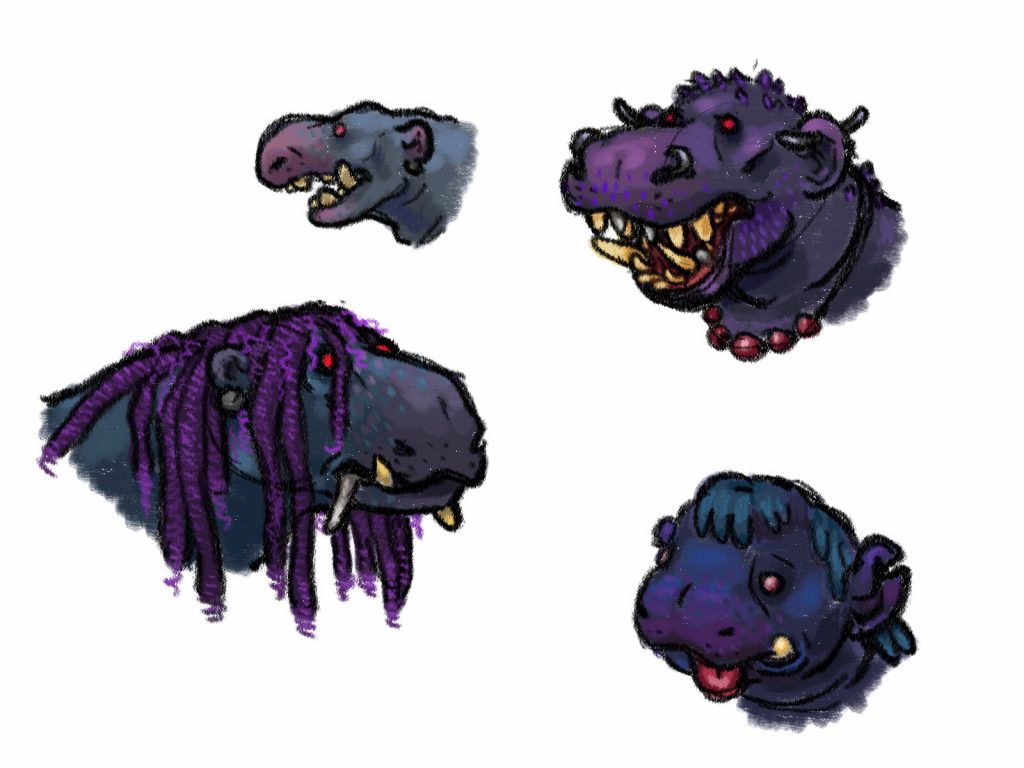

One comment on “Journal of Runic Studies #25”